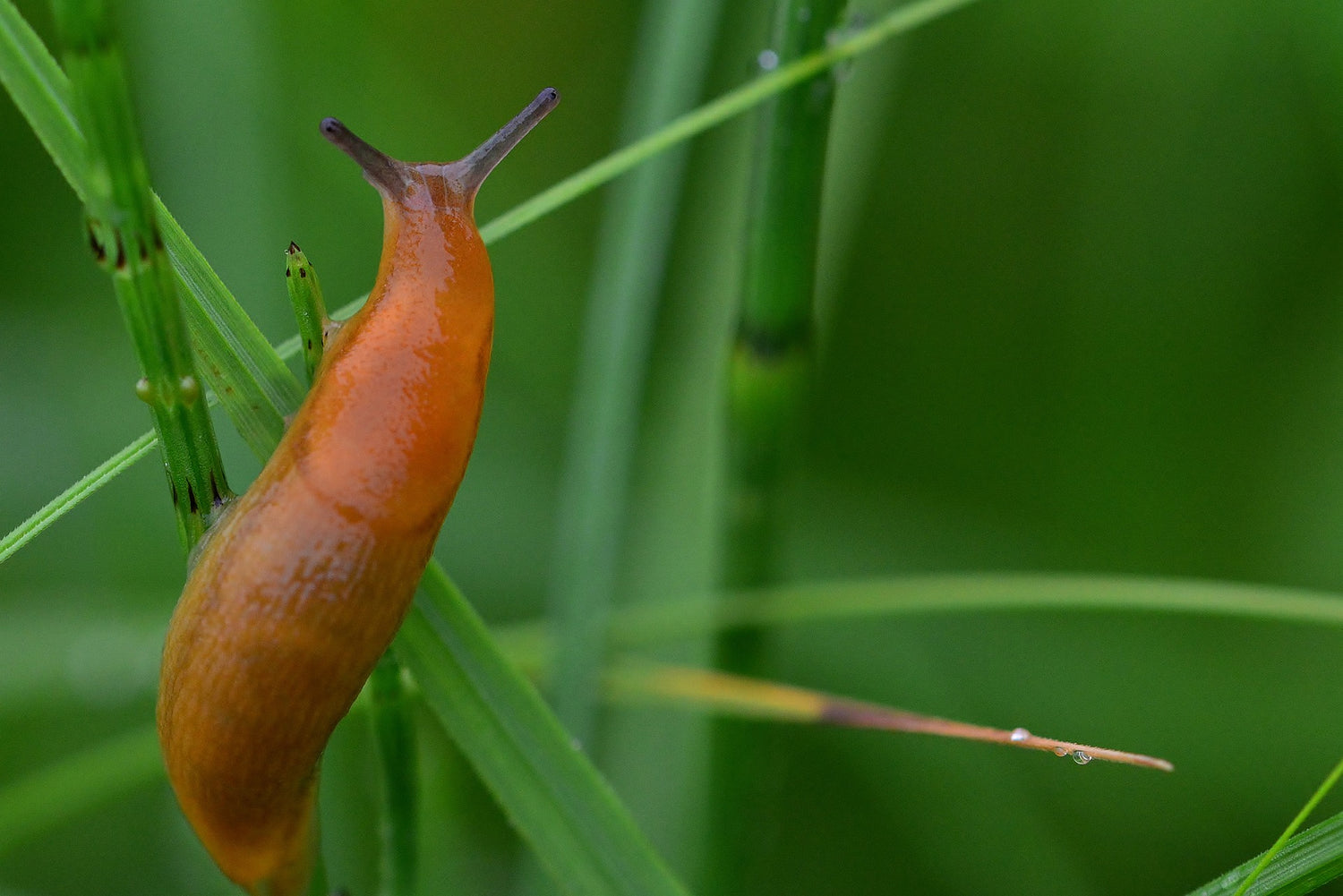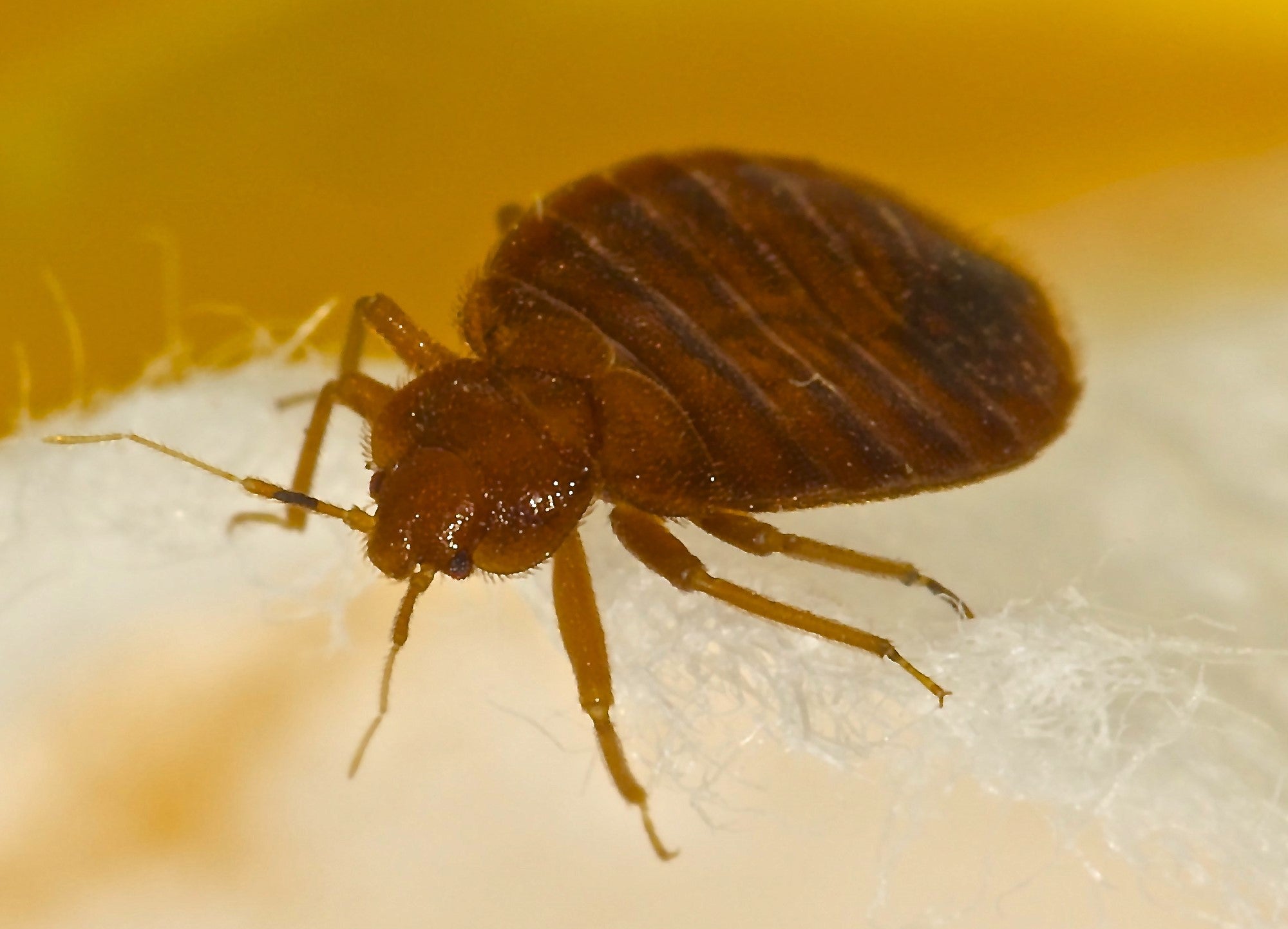Slug infestation - How to get rid of slugs and snails(2021)
Slugs and snails are extremely common in UK gardens, and can wander into houses too. They feed on a variety of vegetable and ornamental plants, from hostas to potato tubers. They’re so common they often can’t be fully-eradicated, so a combination of natural techniques like nematodes, organic slug pellets, and slug collars are the best and easiest long-term solution.

What are slugs?
Slugs and snails are gastropods, single-bodied and soft. They have a muscular foot which secretes mucus, which enables them to climb so well up plants and walls.

Snails have a visible shell that offers more protection. Slugs have a much smaller shell that is not visible.

There are around 40 slug species and 120 snail species in the UK, varying in size from 5-15cm and in various colours such as red, black and beige. Many species do not feed on live plants at all, and are beneficial organisms that are vital for helping decompose dead plants, soil and compost.
They tend to be nocturnal, though they like humid and damp conditions, so warm, wet weather can increase their active hours.
Snails hibernate over autumn and winter, often under small, covered places in your garden like stones, logs and pots, whilst slugs are active all year-round.
Slugs and snails both lay eggs under small, covered spaces like stones, logs, leaves as well as in the soil. These are clusters of yellowish-white spheres around 3-6mm in diameter. Each slug/snail lays around 40-60 eggs. This can happen up to six times a year as soon as the temperature is above 5C.
What do slugs eat
They like a wide variety of plants, particularly hostas, tulips, dahlias, gerberas, sweet peas, and delphiunims.

They also love vegetables, particularly potato tubers, lettuce, peas, beans and celery.

They’re particularly damaging to young, growing plants and seedlings.
Slug damage
Slug damage on leaves
Slugs in gardens can cause heavy damage to leaves, resulting in large holes. These are irregular in shape, because slugs mouths are tongue-like with thousands of microscopic teeth. They do not eat in a typical bite-like way leaving circular holes like some caterpillars do.

They also don’t need to start feeding at the edge of leaves; they can bite anywhere.
Slugs and snails can completely eviscerate a plant’s leaves given enough time.

They also tend to leave slime trails both on the plant and around your garden.
Snail damage to plants
Slugs and snails can also damage all parts of the plant including the roots, stems, bulbs and tubers. Seedlings can be completely eaten and destroyed, and potato tubers are commonly affected.
Slugs in house
Slugs can also come into the house, especially porch areas. They like damp, cool and dark conditions.
Tell tale signs are their slimy tracks found on your floor, walls and surfaces in the morning since they are nocturnal.
Slugs in the house should be dealt with as their slime can potentially carry parasites, for example if you eat food a slug has travelled over. However, such instances are extremely rare.
How to get rid of slugs in house/porch
Their overnight tracks will often tell you what they’re attracted to, and the point of entry. Seal the areas they get in where possible.

Slugs will be attracted to any food not sealed overnight, particularly pet food and leftovers.
However, they also feed on mould and algae, so check if you have a damp problem in your house. In this case, dehumidifiers can help deal with your slug problem.
Slugs in compost
Slugs love compost, and aren’t really a problem in this area as they help create the compost by breaking the organic matter down. For this reason they prefer fresh compost, rather than the completed compost ready to be used in your garden.
Common types of slugs in British gardens
Leopard slug
This is one of the largest slugs in British gardens, reaching up to 15cm in length and living up to 3 years. It is pale with distinct leopard-like spots. It also tends to mate above the ground, from a string of mucus.

Spanish slug
The Spanish slug, or orange slug, is another giant slug that is particularly invasive. It originated from Spain and has since spread to the UK and across the globe. It is a rapidly-proliferating slug as it can mate with other slug species like the common red slug.

Are there any poisonous slugs in the UK
Fortunately, there are no poisonous slug breeds in the UK.
How to get rid of slugs on plants
It’s nearly impossible to get rid of slugs in a garden as they are so widespread. Instead they should be tolerated and managed. Only seedlings and vegetables are most at risk to slugs.
The best and easiest way to do this is by using a slug deterrent or slug collars.
Natural snail deterrents
Slug Pellets
Natural slug and snail deterrents or 'barriers' have become more popular, such as organic slug pellets. These are placed around the plants and have a spiky or unlikeable surface to the slugs, deterring them from your plants.
One such product is EWE STOP® Slugs, which acts as both a physical barrier and odour deterrent for maximum protection. It contains lanolin, an oil extracted from waste sheep's wool, which creates a surface the slugs and snails don't like, without the traditional wool odour.

Because of its organic ingredients and added Scottish seaweed, it actually also helps your plants too - reducing the need for watering, and eventually breaking down to supply nutrients to your soil.
The pellets are sustainably-sourced, made from waste wool, wood and straw material in Wales, and are part of the Welsh Wool Alliance.
Slug collars

Slug collars are circular objects that you simply place around your plant
The specific angles of the slug collar means the slug cannot climb over it, and so cannot access your plant. This acts as a physical barrier.
This is a simple, long-term solution to deal with slugs and snail infestation, with no need for toxic chemicals or any maintenance.
The high-sided design also helps with plant growth and watering. It helps floppy leaves point upwards away from the soil, whilst not damaging leaf stems. It also keeps water in the soil around the roots when watered.
Slug collars don’t restrict plant growth; foliage can grow over the top and roots underneath. They can stay in place all year, with no maintenance required. They have a highly durable design and are easy to clean.
- Physical barrier preventing slug attack
- Simple to use and maintenance free
- Suitable for any plant attacked by slugs or snails
- Easy to clean and highly durable design
Standard collars have an internal diameter of 13cm suitable for individual plants (e.g. Hostas), salads, vegetables and even any supporting canes. They are available in packs of 6 in subtle green plastic, or stylish aluminium metal, which is more eco-friendly. Aluminium is famously highly resistant to rust.

A large slug collar with an internal diameter of 28cm is also available.
Snail poison
Traditional slug pellets, which contained metaldehyde, have now been withdrawn by the Health and Safety Executive (HSE) for their damaging effects on birds and mammals.
Ferric phosphate is now the only approved chemical slug control. Be aware, however, that it can still pose risks to children and pets if ingested.
Slugs and copper
Slugs have been found to be repelled by copper in some studies. However, an RHS study found that copper-based barriers, for example copper tape, was ineffective. For this study, the RHS created a realistic garden scenario, rather than lab-controlled conditions.
How to kill snails naturally
Nematodes for slugs
Nematodes can be employed for slugs as a biological control. The nematodes are microscopic worms that are natural predators of slugs. They come in a powder and are mixed with water and added to the soil with a watering can. The worms can move through the soil, hunt down the slugs and kill them.

These don't work against snails, but can be very effective against slugs, especially since a lot of slugs go underground.
A combination of slug nematodes like Nemaslug® and a slug and snail barrier like EWE STOP® Slugs or slug collars, gives you the best chance of protecting your plants from getting eaten.
Salting slugs
Salting slugs is a common technique gardeners use. Salt is toxic to slugs, since it draws the moisture out from their bodies through osmosis, dehydrating it rapidly and killing it.

This can be effective but takes high quantities of salt, and salt can also cause damage to your garden, such as making the soil unplantable or damaging surfaces like wood.
Many also deem it a cruel way to kill slugs, which have an advanced nervous system.
Best method to get rid of slugs naturally
A combination of slug nematodes like Nemaslug® and a slug and snail barrier like EWE STOP® Slugs or slug collars, gives you the best chance of protecting your plants from getting eaten.
Related Products
Nemaslug®

Natural nematodes that are predators of slugs. Simply mix the powder into your watering can and water the soil around your plants.
EWE STOP® Slugs

Organic slug and snail pellets - An organic physical and also odour-repelling barrier made from waste wool, straw and wood.
Slug Collars

Simple to use and maintenance free physical barrier to prevent slugs and snails getting to your plants.



